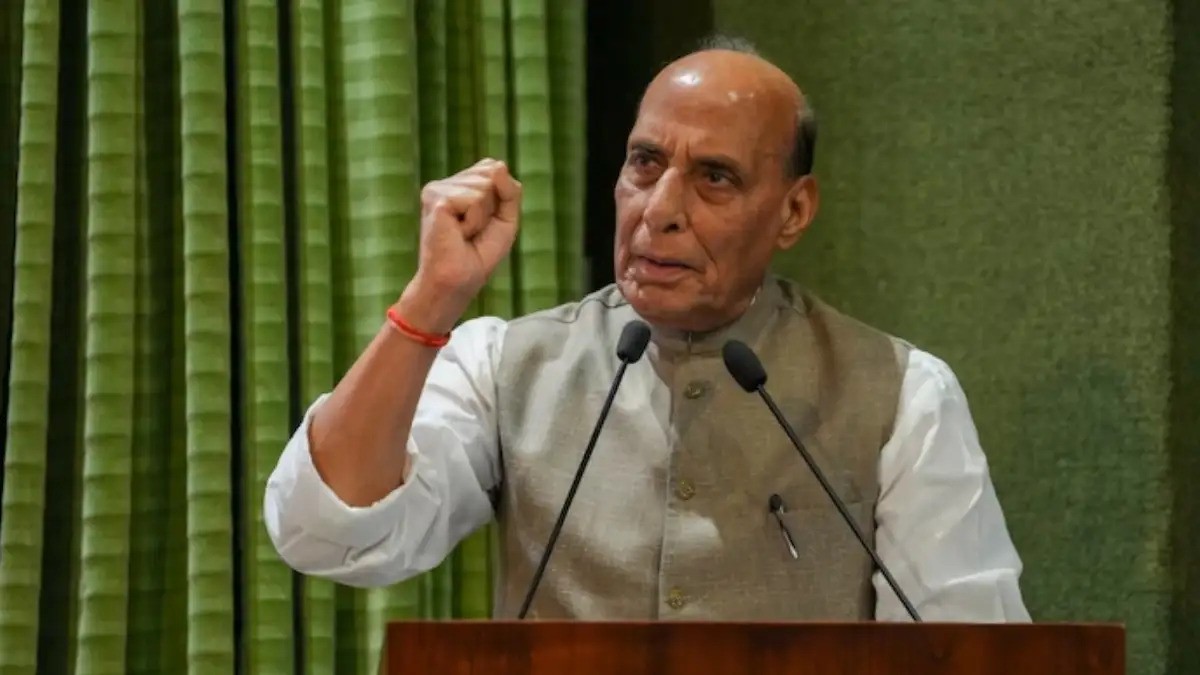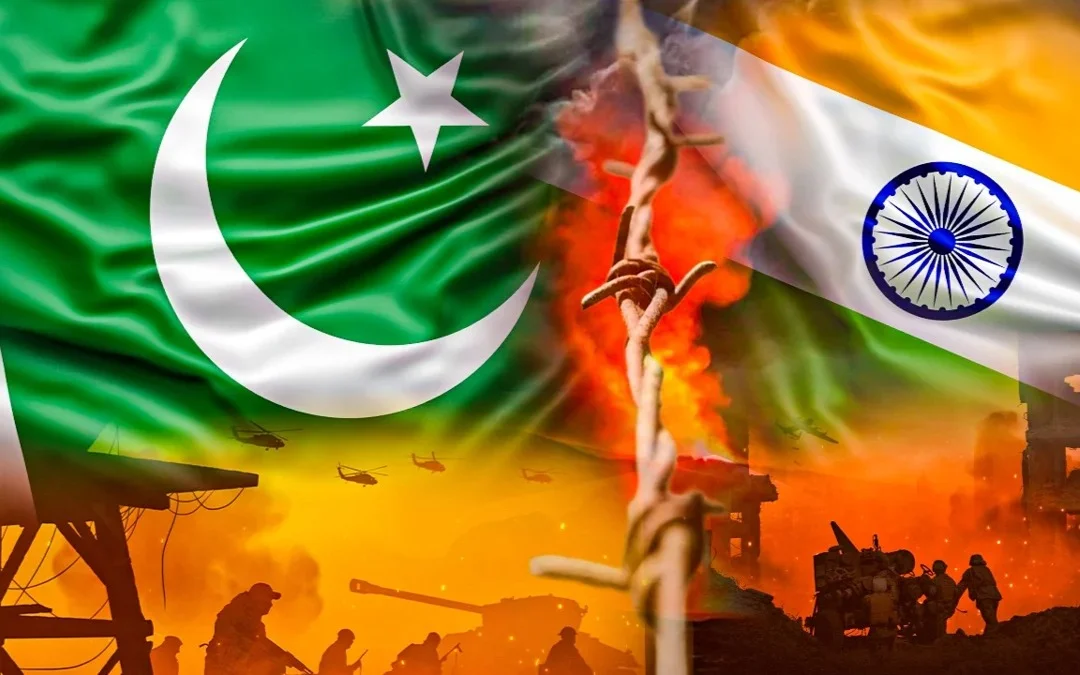India’s Defence Minister, Rajnath Singh, has recently sparked a new controversy by suggesting that “[Indo-Pak] borders can change” and that Sindh — presently part of Pakistan — might “return to India” someday, citing deep civilizational ties. As alarming as such rhetoric may sound at first glance, there are strong reasons why Pakistan need not panic or treat this as a credible existential threat. Below, we explore why Singh’s statement should be seen largely as symbolic posturing, not as a real policy shift, and how Pakistan can respond confidently without overreacting.
1. Political Posturing, Not Official Policy
First and foremost, it’s important to recognize that Singh delivered these comments at a Sindhi community event (Sindhi Samaj Sammelan) in New Delhi — not in a formal diplomatic or strategic forum. This setting strongly suggests that his remarks were intended for emotional effect, mainly to appeal to the Sindhi Hindu diaspora in India, rather than announce any formal territorial ambition.
There is no indication so far that this is a part of India’s official state policy. Rather, it appears to be a political expression rooted in cultural and historical narrative, rather than a plan backed by legal or diplomatic action. The Foreign Office of Pakistan has righly called the remarks “delusional … dangerously revisionist,” but also emphasized that they violate international law and challenge sovereignty, not that they reflect a forthcoming military strategy. When such statements are symbolic, they can be diplomatically countered without escalating into crisis mode.

2. Established International Borders Are Not Easily Redrawn
Despite Singh’s provocative mention that “borders can change,” the reality is that international borders are legally entrenched. Sindh has been part of Pakistan since the Partition in 1947, and its status is recognized under international law. Any attempt to alter borders would face enormous legal, diplomatic, and geopolitical obstacles.
Changing borders is not like shifting political narratives in speeches: it requires treaties, mutual consent, and global recognition. It cannot be whimsically altered without massive international pushback. Singh’s words, while inflammatory, do not automatically translate into a plan for redrawing maps — especially not without undermining India’s own standing in the world for violating international norms.
3. Domestic Audience & Symbolic Gesture
Another layer to understand is the audience and purpose of Singh’s speech. By addressing the Sindhi community in India, he played to sentiments of cultural nostalgia and shared heritage, invoking figures like L.K. Advani, who have written about Sindhi Hindus’ deep ties to undivided India. This is part of a broader political and ideological narrative, not necessarily a blueprint for annexation.
Nationalist and symbolic rhetoric is common in politics, especially in a country as large and historically complex as India. Leaders often invoke civilizational heritage to rally domestic bases or to establish a legacy. Making such statements does not necessarily mean they intend to follow through with aggressive geopolitical moves — it can be a way to stir emotion, evoke history, and strengthen ideological identity.
4. Pakistan’s Diplomatic Position Is Strong
Pakistan’s response so far has been measured and well within the bounds of diplomatic norms. The Foreign Office has strongly condemned the remarks, branding them provocatively revisionist, but has also called on India to focus on more constructive issues rather than destabilizing rhetoric.
This measured response is important. It avoids escalation while signaling that Pakistan takes its sovereignty seriously. Overreaction — militarily or otherwise — would only play into the narrative of conflict that such statements sometimes attempt to create. Instead, Pakistan can continue to rely on well-established international law and diplomatic mechanisms to reinforce its territorial integrity.
5. Risk of Blowback for India
If India attempted to act on such rhetoric, it would face overwhelming global resistance. A genuine attempt to change international borders would likely isolate India diplomatically, undermine its credibility, and potentially provoke broader conflict. The cost of turning such statements into action would be massive, both militarily and politically.
Also, such rhetoric risks undermining India’s own internal coherence. While it may play well to a certain ideological base, more pragmatic and internationally minded stakeholders (both in India and abroad) may see this as destabilizing posturing. The moment talk of redrawing borders goes beyond symbolic speeches, the risks could outweigh the political gains.
6. Pakistani Resilience & National Unity
Pakistan has faced its share of rhetorical provocations over the decades, and its national resilience has been tested time and again. The focus now should be on strengthening internal solidarity, promoting economic growth, and investing in human capital — rather than being distracted by inflammatory but potentially hollow political grandstanding.
Moreover, Pakistani civil society, media, and policymakers should seize this moment to reaffirm their commitment to peaceful coexistence, diplomatic engagement, and responsible statecraft. By refusing to be drawn into reactionary postures, Pakistan can reinforce a narrative of strength, stability, and legitimacy — domestically and internationally.
7. Soft Power and Alternative Responses
Rather than escalating tensions, Pakistan can counter this narrative through soft power and diplomatic outreach. This could mean:
-
Public diplomacy: Highlighting Sindh’s current role within Pakistan, its economic development, and its contribution to Pakistan’s national identity.
-
Cultural engagement: Featuring Sindhi culture, language, and heritage in national and international platforms to show that Sindh’s identity thrives within Pakistan.
-
Engagement with global institutions: Reaffirming Pakistan’s commitment to international borders, sovereignty, and peace to win global opinion.
-
Strategic restraint: Prioritizing diplomatic channels over military posturing, which would serve a more sustainable long-term policy.
8. Long-Term Strategic Perspective
In the long run, Pakistan should view Singh’s comments as part of a larger pattern of ideological posturing by political leaders, rather than a credible strategic threat. The geopolitical reality is that Pakistan is a sovereign nation with recognized borders, a functioning government, and international legitimacy.
Pakistan’s real security challenges will continue to come from asymmetrical threats, terrorism, regional instability, and economic pressures — not from symbolic speeches. By maintaining focus on these real issues, Pakistan can continue to build resilience without being dragged into escalatory nationalism.
Conclusion
Undoubtedly, Rajnath Singh’s controversial remarks about Sindh are provocative and rooted in a deeply emotional, civilizational narrative. But they should not be treated as a genuine redrawing of borders. For Pakistan, the path forward lies not in overreaction, but in carefully calibrated diplomatic responses, strong reaffirmation of sovereignty, and a commitment to long-term stability.
The signal from Islamabad should be clear: Pakistan will never compromise on its territorial integrity, but it also won’t get sucked into headlines and rhetoric. Instead, it will rely on international law, responsible diplomacy, and the resilience of its people to uphold its sovereignty.
In the face of symbolic political grandstanding, Pakistan’s real strength lies in its ability to stay grounded, respond wisely, and focus on the future — not on hyperbole.
Mr. Sabahuddin Qazi serves as the Chief Editor of Press Network of Pakistan.



